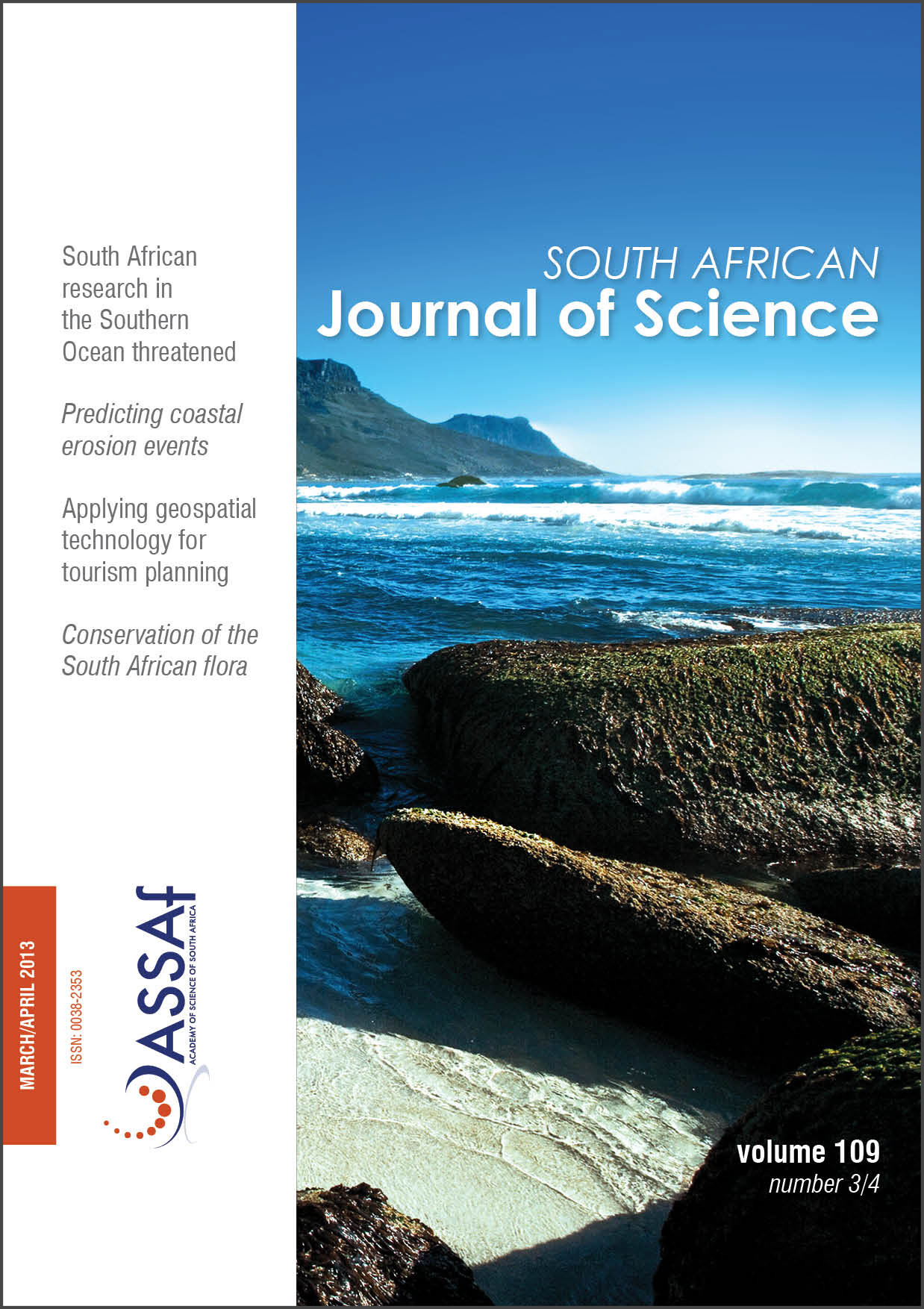KwaZulu-Natal coastal erosion events of 2006/2007 and 2011: A predictive tool?
DOI:
https://doi.org/10.1590/sajs.2013/20120025Keywords:
coastal erosion, megarip currents, lunar nodal cycle, lunar perigean subharmonic, erosion hotspots, coastal erosion predictionAbstract
Severe coastal erosion occurred along the KwaZulu-Natal coastline between mid-May and November 2011. Analysis of this erosion event and comparison with previous coastal erosion events in 2006/2007 offered the opportunity to extend the understanding of the time and place of coastal erosion strikes. The swells that drove the erosion hotspots of the 2011 erosion season were relatively low (significant wave heights were between 2 m and 4.5 m) but of long duration. Although swell height was important, swell-propagation direction and particularly swell duration played a dominant role in driving the 2011 erosion event. Two erosion hotspot types were noted: sandy beaches underlain by shallow bedrock and thick sandy beaches. The former are triggered by high swells (as in March 2007) and austral winter erosion events (such as in 2006, 2007 and 2011). The latter become evident later in the austral winter erosion cycle. Both types were associated with subtidal shore-normal channels seaward of megacusps, themselves linked to megarip current heads. This 2011 coastal erosion event occurred during a year in which the lunar perigee sub-harmonic cycle (a ±4.4-year cycle) peaked, a pattern which appears to have recurred on the KwaZulu-Natal coast. If this pattern proves true, severe coastal erosion may be expected in 2015. Evidence indicates that coastal erosion is driven by the lunar nodal cycle peak but that adjacent lunar perigee sub-harmonic peaks can also cause severe coastal erosion. Knowing where and when coastal erosion may occur is vital for coastal managers and planners.
Published
Issue
Section
License

All articles are published under a Creative Commons Attribution 4.0 International Licence
Copyright is retained by the authors. Readers are welcome to reproduce, share and adapt the content without permission provided the source is attributed.
Disclaimer: The publisher and editors accept no responsibility for statements made by the authors
How to Cite
- Abstract 507
- PDF 463
- EPUB 170
- XML 268













.png)